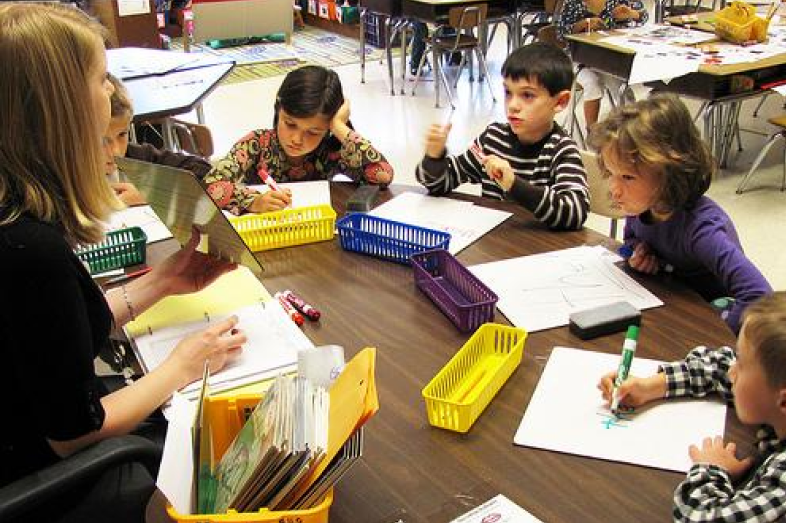

More students in the District of Columbia Public Schools will have the opportunity to become bilingual starting next year. The school district has announced it will begin three additional dual-language immersion programs in the fall at the elementary, middle and high school levels, for the first time guaranteeing that students who wish to complete all of their preK-12 instruction in both Spanish and English can do so in the district.
Dual-language options in Washington, D.C. are in high demand, as demonstrated by the long waiting lists each year at the 13 traditional public and charter elementary schools currently offering such programs.
These additions are welcome news to parents hoping to raise multilingual kids, and also to activists who have advocated for access to such programs for students of all races across all socioeconomic levels. At both Roosevelt High School, where dual-language instruction will be offered in ninth grade, and Houston Elementary School, a low-performing school east of the Anacostia River, nearly all of the students are minorities, and most are low-income. MacFarland Middle School – which closed in 2013 and will reopen this year with 40 dual-language program slots for sixth graders – also served a high concentration of minority, low-income students.
“We know that these programs are particularly useful in trying to narrow the achievement gap,” D.C. Language Immersion Project Executive Director Vanessa Bertelli said Thursday, citing research that shows children in these types of programs have tested as much as two years ahead of their peers in reading and math. The nonprofit group advocates for the expansion of language immersion programs across all of the District’s eight wards in hopes that all schools will offer instruction in two languages by 2035.
Currently, the majority of these programs are concentrated in the northern part of the city in wards 1 and 4, but the District’s poorest neighborhoods in wards 7 and 8, including near Houston Elementary School, had no dual-language options.
“We’re super excited,” Bertelli said. “We’ve been arguing that there’s a huge equity issue in the distribution of these programs.”
DCPS Press Secretary Michelle Lerner said the district is ”striving for more equity in these programs.” Lerner (who also sits on EWA’s community member advisory board) said that when DCPS launched its dual-language program back in the 1970s, it was seen as a a tool for teaching English-language learners. Since then, the district has come to recognize the benefits to all students that learning two languages for can provide, she said. At Houston Elementary, for example, only 1 percent of the students are English-language learners, and only 4 percent are Latino. The rest of the students are black.
“We hear all the time from people that, ‘Oh, these kids cannot even speak English properly. Why are we teaching them another language?’ referring to poor African American kids,” Bertelli said. “We have amazing research that actually these children have a much better chance at being proficient in English, if they are in these programs.”
Though Bertelli is pleased with the expansion, she said there’s still work to be done. “It is very exciting that this message is going through and that DCPS is responding to the demand. At the same time, it’s nowhere near satisfying the demand for these programs or curing the inequity. Hopefully it’s the beginning of a very interesting time in D.C., where we can start to address equity issues.”